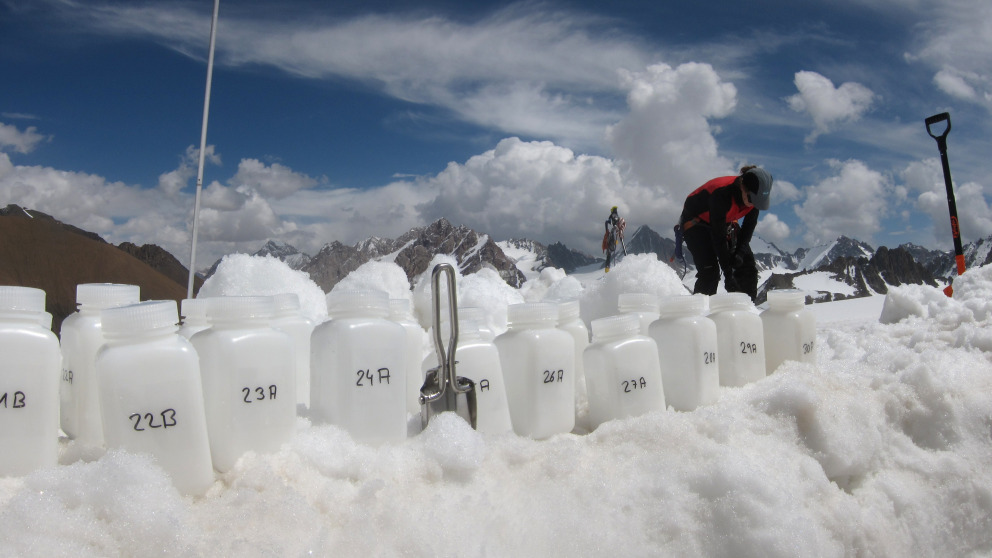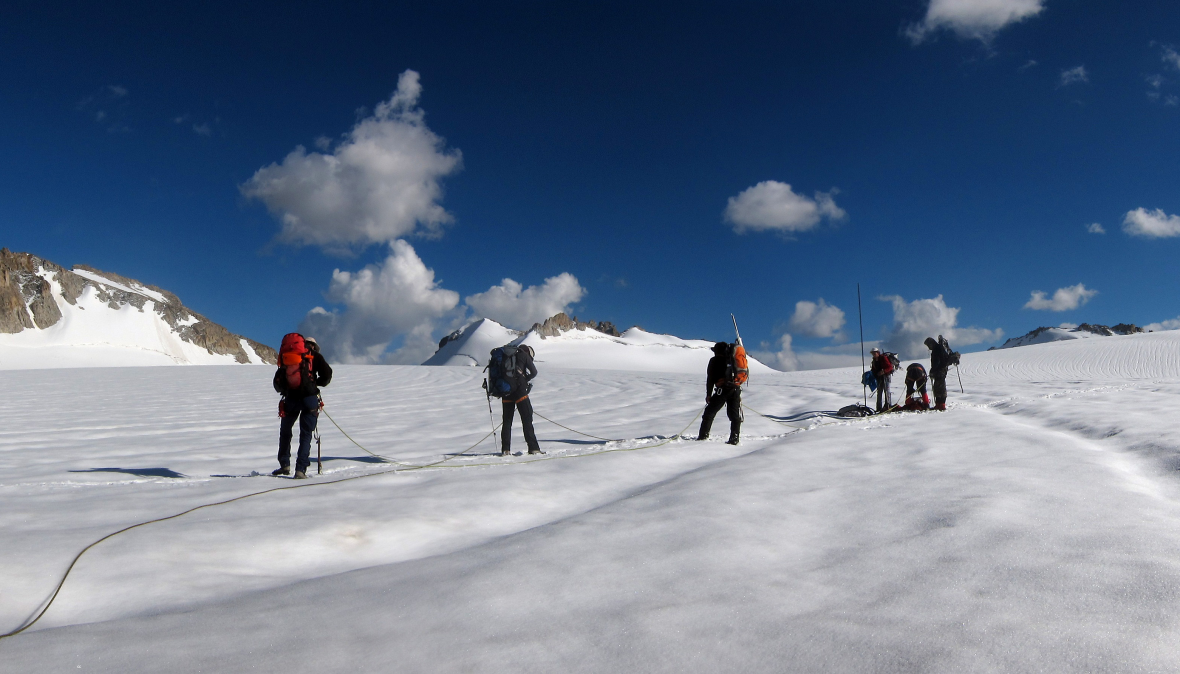Keeping Track of Glacier Melt: Research on Climate Change in the Kyrgyz Highlands
17.07.2014

Much of the water in the rivers of Kyrgyzstan comes from melting snow and glaciers in the Pamir and Tian Shan Mountains. Since the 1970s, the ice masses there have been shrinking at a much faster rate than before as a result of global warming. This effects the supply of drinking water, the potential of hydroelectric power, and the irrigation of farmland in the Central Asian country. While the amount of water is set to increase in the short term, in the long run a reduced glacier volume will lead to a decrease in meltwater runoff. In order to make reliable prognoses about glacier melt, measurements of the impact of climate change are needed.

As part of the CATCOS (Capacity Building and Twinning for Climate Observing Systems) project coordinated by the University of Fribourg, the atmospheric scientist Dr Julia Schmale from the IASS will take snow samples from the Abramov, Golubin, Suek and No. 354 Glaciers in August and September together with colleagues from the Chinese Academy of Sciences and the University of Massachusetts at Amherst. The scientists want to fill around 200 vials with snow, which will subsequently be analysed for its soot, organic carbon and mineral particle content in Germany, China and the USA. “The results will give us some indication of the amount of dust transported to the Tian Shan Mountains from the surrounding desert regions or more distant sources in North Africa, for example”, says Schmale. Anthropogenic emissions such as particulates from exhaust fumes will also be measured.
This series of measurements is necessary to estimate the future development of the glaciers, as dirty snow melts more quickly than fresh, white snow. As Schmale explains, “bright surfaces reflect most sunlight back, but snow that has become darker absorbs the sun’s rays and gets warm.” The results of the measurements will fill a research gap, as we still know little about the composition and transportation of aerosol particles in Central Asia.
This is Schmale’s second trip to Kyrgyzstan with a team from the German Research Centre for Geosciences (GFZ), a cooperation partner of the IASS. As part of the CATCOS project, a new hydro-meteorological station was set up on the Abramov Glacier in August 2011 under the direction of the GFZ and in cooperation with the “Central Asian Water” (CAWa) research network. With their measurements, the scientists there want to keep track of changes to the glacier.
Photos: (c) Daniel Farinotti